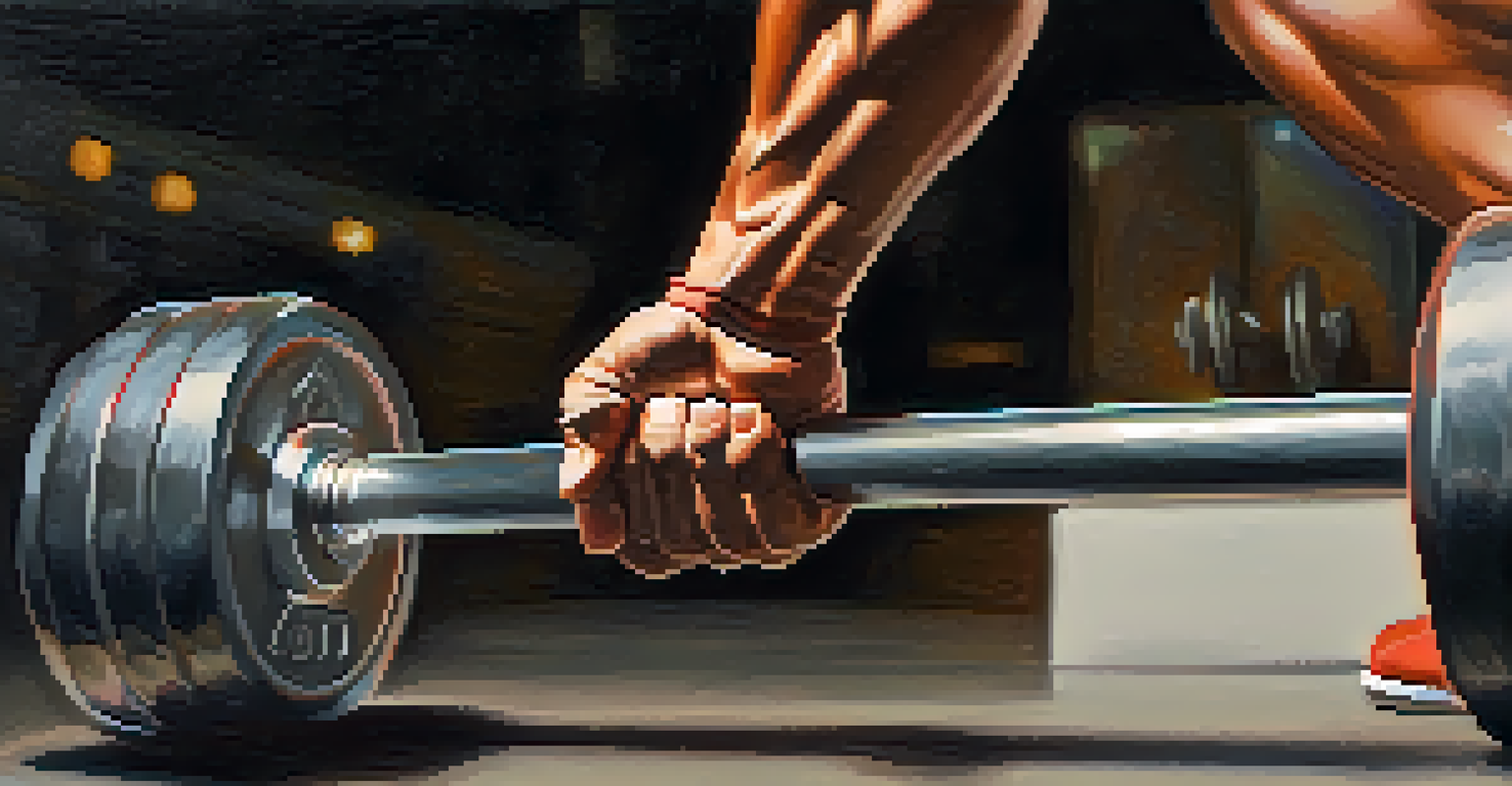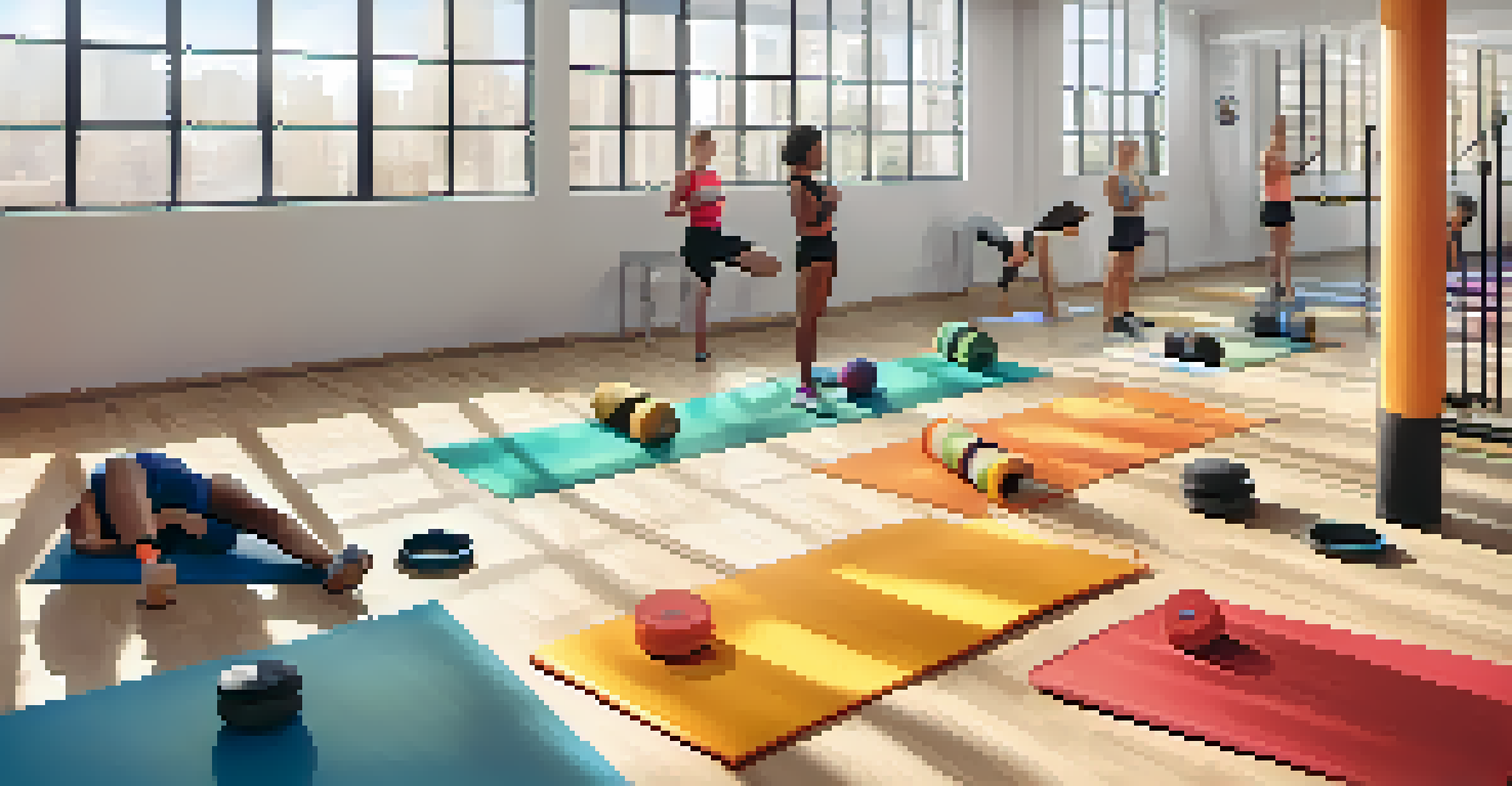Bodybuilding Warm-Ups: Preparing for Endurance Activities

Understanding the Importance of Warm-Ups in Bodybuilding
Warm-ups are crucial in bodybuilding as they prepare your body for intense workouts. They increase blood flow, which helps deliver oxygen to your muscles, making them more flexible and less prone to injury. Just like a car needs to warm up before hitting the road, your body requires that same gentle preparation.
By failing to prepare, you are preparing to fail.
Additionally, warm-ups mentally prepare you for the workout ahead. They act as a signal to your brain that it’s time to switch gears from a sedentary state to an active one. This shift in mindset can enhance focus, which is vital for success in bodybuilding.
Incorporating a warm-up routine can improve your overall performance. When your muscles are warmed up, they can work more efficiently, allowing you to lift heavier weights and perform more reps, ultimately leading to better results.
Dynamic Stretching: The Key to Effective Warm-Ups
Dynamic stretching involves moving parts of your body through a full range of motion, which is perfect for preparing muscles for activity. Unlike static stretching, where you hold a position, dynamic stretches get your heart rate up and improve circulation. Think of it as a gentle shake to wake up your muscles before the workout.

Examples of dynamic stretches include leg swings, arm circles, and torso twists. These movements mimic the actions you'll perform during your workout, making them highly effective. By engaging similar muscle groups, you’re priming your body for the demands of bodybuilding.
Warm-Ups Prevent Injuries
Incorporating warm-ups increases blood flow and flexibility, reducing the risk of injury during intense workouts.
Incorporating dynamic stretches into your warm-up routine can also help enhance your flexibility over time. As your muscles adapt to these movements, you may notice improved range of motion, which is beneficial for both performance and injury prevention.
Incorporating Mobility Drills for Joint Health
Mobility drills focus on enhancing the range of motion in your joints and are an essential part of any warm-up routine. They can help prevent injuries by ensuring that your joints are functioning optimally. Think of your joints as the hinges on a door; if they’re stiff or rusty, the door won’t open smoothly.
The only bad workout is the one that didn’t happen.
Common mobility drills include hip circles, shoulder dislocations, and ankle rolls. These exercises target specific joints that are crucial for effective bodybuilding movements. By incorporating these drills, you’re setting the groundwork for a more fluid and powerful workout.
Moreover, improving your joint mobility can lead to better lifting techniques. When your joints can move freely, you can achieve proper form, which is key in maximizing gains and minimizing the risk of injury.
The Role of Cardio in Your Warm-Up Routine
Light cardio is an often-overlooked part of a warm-up routine, but it’s incredibly beneficial. Activities like jogging, cycling, or skipping rope for 5-10 minutes elevate your heart rate and further increase blood flow to your muscles. Think of it as revving the engine before a race.
In addition to preparing your muscles, cardio helps to boost your metabolism. This is especially helpful if you’re looking to shed body fat while building muscle. An increased metabolic rate means your body will be more efficient at burning calories during your workout.
Dynamic Stretching Boosts Performance
Dynamic stretching prepares muscles for activity by mimicking workout movements, enhancing flexibility and overall performance.
Including a short cardio session isn’t just about warming up; it also helps with your endurance. As you build your stamina through consistent cardio, you'll find that you can push harder during your bodybuilding sessions, leading to improved overall performance.
Specific Warm-Up Sets: Preparing for Heavy Lifts
Specific warm-up sets involve performing lighter versions of the exercises you plan to do during your workout. For instance, if you’re planning to bench press heavy, start with just the bar or lighter weights to activate the muscles you'll be using. This method allows your body to gradually adapt to the heavier load.
These warm-up sets not only prepare your muscles but also help you practice your form. By focusing on technique with lighter weights, you can reinforce proper movement patterns, which is crucial for avoiding injury when you increase the weight.
Additionally, specific warm-up sets help you gauge how your body feels that day. If you notice any discomfort, you can adjust your workout accordingly, ensuring that you don’t push through pain that could lead to injury.
Breathing Techniques to Enhance Warm-Up Effectiveness
Breathing techniques are often overlooked but can significantly enhance your warm-up routine. Focusing on deep, controlled breaths can help oxygenate your muscles and improve overall performance. Imagine filling up a balloon; the more air you add, the better it can expand and perform its function.
Incorporating diaphragmatic breathing, where you breathe deeply into your belly rather than shallowly into your chest, can help calm your mind and prepare you mentally. This approach can reduce anxiety and improve concentration, making your workout more productive.
Listen to Your Body's Needs
Personalizing your warm-up routine based on how your body feels helps optimize preparation and performance while minimizing injury risk.
Furthermore, conscious breathing can help you connect with your body. As you warm up, pay attention to how your muscles feel with each breath, allowing you to identify any tight spots that may need extra attention during your workout.
Listening to Your Body: Adjusting Warm-Ups as Needed
Listening to your body is perhaps the most important part of any warm-up routine. Everyone's body is different, and what works for one person may not be ideal for another. Pay attention to how you feel during your warm-up and adjust accordingly; if something doesn’t feel right, it’s okay to modify your routine.
If you notice particular tight areas or discomfort, spend extra time warming those muscles up. This personalized approach ensures that you are properly prepared for your workout, reducing the risk of injury and enhancing performance.

Remember, warming up is not just a checklist item; it’s an essential part of your training. By tuning into your body’s needs, you’ll develop a warm-up routine that maximizes your potential and sets you up for success.